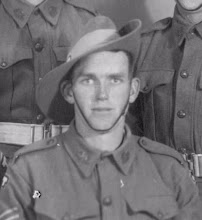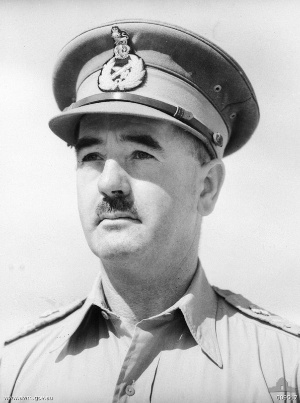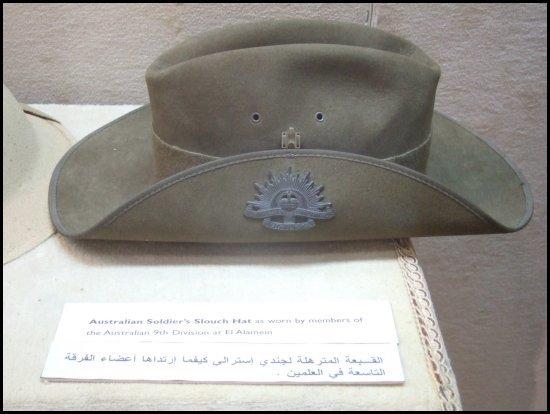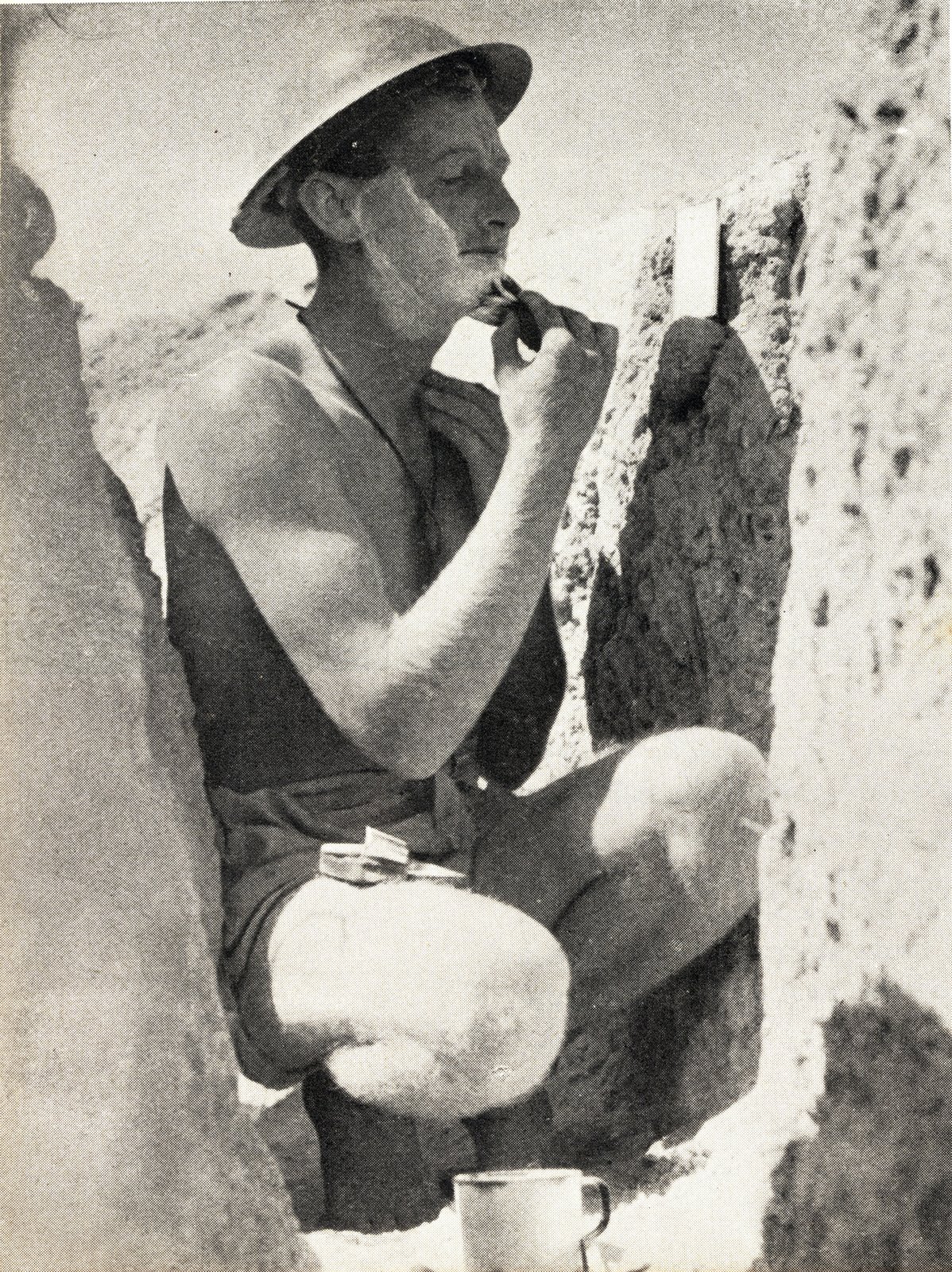VX24598 Bombardier E.J. Courtney MM
VX24598 Bombardier Edward James Courtney of the 2/3rd Light Anti Aircraft Regiment, attached to the 9th Division demonstrates the Italian Breda Model 35 20mm cannon that he won his Military Medal on.
His citation for the Military Medal reads;
"For bravery and devotion to his duties in an A.A. detachment whilst under heavy dive bombing and machine gun fire."
At Tobruk on 25th April and 7th May, 1941.
"1. On 25th April at Pilastrino when over forty E.A. (Enemy Aircraft) took part, the Breda gun on which Gnr Courtney was a gun number had a stoppage during the engagement. The detachment took cover, with the exception of Gnr Courtney who remained at his post working to free the stoppage in spite of heavy machine gun fire and near bomb explosions, and succeeded in getting the gun into action again and enabling to detachment to reengage the E.A."
"2. On 7th May when protecting a troop of 60-pdr. guns in another dive bombing attack, Gnr Courtney's gun again had a stoppage. He preceded to clear the stoppage despite the fact that three ME.110's were machine gunning along the ridge and several of the bullets entered the gun pit narrowly missing him while he was working. Through his efforts the gun was eventually brought back into action."
Another classic example of Australian troops using a captured Italian gun against German aircraft. If it would shoot Aussies would use it.
VX24598 Bombardier E.J. Courtney MM's entire service record has been digitised by the Australian National Archives. Find the link in the "Research Links" sidebar to the right.
image 020589 Australian War Memorial.












